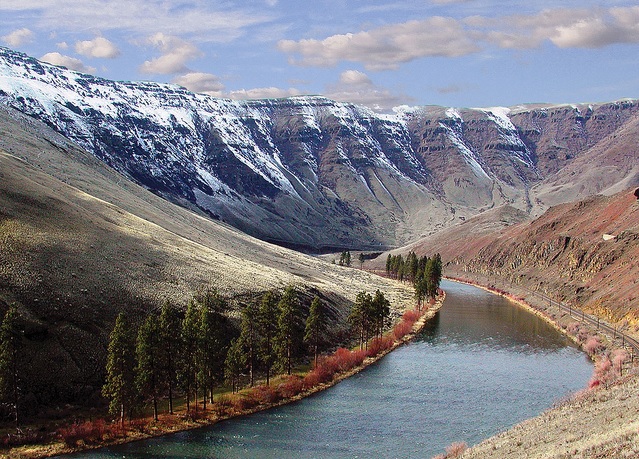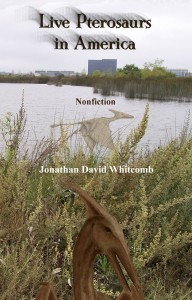What do scientists think about pterosaur sighting reports? Many of them have probably never heard about any relevant research. We need to remember that searching for live “pterodactyls” is still within the realm of cryptozoology, for we don’t yet have any living or recently-deceased animal to examine. For now, let’s see what one biology professor has done in searching for a bioluminescent living pterosaur and then consider the origin of the extinction idea and then see what scientific analysis has been done on recent data from pterosaur sightings.
.
Bioluminescent Flying Creatures in Washington State
From the third edition of my book Live Pterosaurs in America:
Late in 2007, I received an email from Peter Beach, a biology professor . . .
“I went on a short trip to the Yakima River this summer . . . because there was a [sighting]. We were unable to get a picture but we saw many . . . flashing lights. I would have assumed that [they] were fireflies but we [don’t] have them in Washington. One of the flashes took off from a big tree overhanging the river and made a kind of flashing coma turn. Many flashes were parallel to the river. . . .
. . . “Prime hunting grounds for fish-eating birds. Only these things fish at night with bioluminescence. At first I thought I was just seeing shooting stars, but they were all parallel to the river and close to the horizon. Next I noticed that when the cloud cover came in, I could still see the flashes. They were under the cloud cover. Whatever they are, I suggest that they are at least unknown to science, night flying, bioluminescent, flying creatures about the size of an eagle or big hawk . . .”
In August of 2008, I received another email from the professor:
“During the short expedition I led with the O’Donnells, mid-July [an expedition more recent than the one mentioned above], we saw three hours of bioluminescent ‘shooting stars.’ The last hour was the most interesting in that there were two light blasts about 200 ft. apart, about 50-100 ft., above the river. The blasts were followed by screeches from about a dozen or so agitated nighthawks in the general area. I think the Rhamphorhynchoids, if that is what they were, were feeding on the nighthawks as the nighthawks were feeding on the flying insects.”

Yakima River, in the state of Washington
.
Origin of Universal-Pterosaur-Extinction Axiom
Many scientists take this axiom for granted, but pterosaur extinction, regarding every species, is clearly a basic assumption, not a proven fact. In the ebook Live Pterosaurs in Australia and in Papua New Guinea, I wrote:
The first discovery of a pterosaur fossil by a Western scientist, in 1784, was decades before Charles Darwin began writing about his ideas on extinctions and evolution. Before Darwin, Western scientists had assumed that all species of pterosaurs were extinct for a simple reason: Those who discovered the fossils had no experience with any similar animal that was living.
Since 1784, universal-pterosaur-extinction has been taken for granted, as the years turned into decades, throughout the nineteenth century and throughout the twentieth century. The breadth of this assumption expanded, from generations of regurgitated proclamations, but the depth has always been shallow, with no real evidence of any kind.
I know that some paleontologist will point to fossils as if their specimens prove the extinction of all species of pterosaurs that ever lived upon the earth. Nonsense! Not only are new species or organisms being discovered in fossils but new species are also being discovered in living creatures. Regarding pterosaurs, nobody, not even a paleontologist with a university diploma, can reasonably display their fossils as if that display were proof of extinction for species for countless species for which we have no fossils.
.
Statistics on Credible Pterosaur Sightings
Long tails dominate. Of those eyewitnesses who specified tail length or the presence or absence of a long tail, 95% reported a long tail. This alone discredits any skeptic’s insinuation that the sightings are mostly hoaxes, for few, if any, hoaxers would report a long-tailed pterosaur. Films and television have given us images of pterosaurs without long tails, with few exceptions. Hoaxers would not likely report something contrary to what is commonly seen in film or on television.
Overall statistics for wingspan estimates also count against any major hoax involvement. For those eyewitnesses who made estimates of wingspan, 31% (23 out of 74) reported sizes greater than seven feet but less than fifteen feet. If many hoaxes were involved, this range (7-15 feet, non-inclusive) would have been much less . . . [7-15 feet is much too big for Rhamphorhynchoid pterosaurs but too small for a hoaxer to use to shock anybody or to convince many persons that a non-bird was reported.]
. . . Of all the sighting reports compiled into the database by the end of 2012, those in which eyewitnesses were sure of the lack of any feathers was 21% but those eyewitnesses who thought it only probable (that there were no feathers) was 25%. . . . If hoaxes played a major role in the sighting reports, an insistence on lack of feathers would dominate. This is the opposite of what the overall data shows for this characteristic. Eyewitnesses who are positive about featherlessness are outnumbered by those who are not positive about it. . . .
From these three factors, we see that no hoax or hoaxes played any significant role in the 128 reports analyzed.
.
This goes into details about scientific analysis of wingspan estimates.
.
###
Nonfiction cryptozoology book; paperback; third edition
How are sightings in the United States related to those in the southwest Pacific? How do some apparent nocturnal pterosaurs pertain to bats, and how are bats irrelevant? How could modern living pterosaurs have escaped scientific notice? These mysteries have slept in the dark, beyond the knowledge of almost all Americans, even beyond our wildest dreams (although the reality of some pterosaurs is a living nightmare to some bats). These mysteries have slept . . . until now. [From the Title page of Live Pterosaurs in America, third edition]
.



